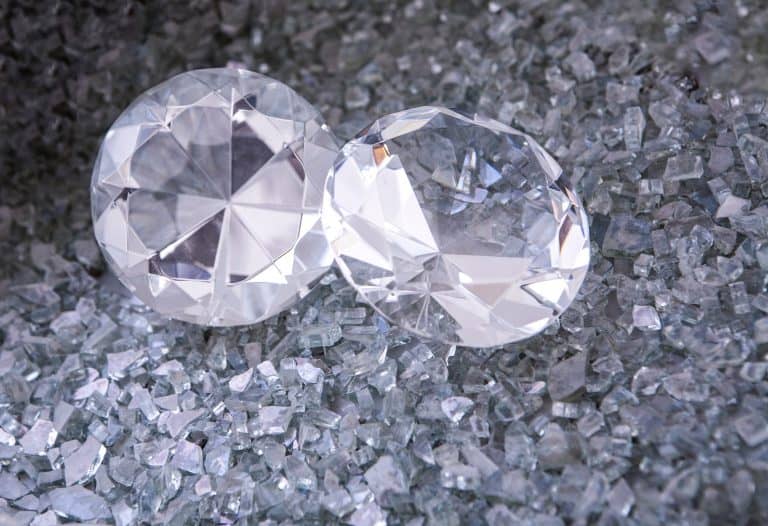Free worldwide shipping with DHL
- SHOP
CATEGORY
MenuCOLLECTION
MenuOCCASION
MenuENGAEMENT
Menu - CUSTOM DESIGN
- ABOUT
- BLOG
- CONTACT
Free worldwide shipping with DHL

Have you heard about lab-grown diamonds? Are you looking for the perfect stone that matches your dreamy future jewelry? there is so much important information to share about these beautiful, alternatives to natural diamonds. Just for you, we have selected the top important details you need to know in a quick Q&A, Let’s begin!
A lab-grown diamond is “grown” inside a lab using a technology that replicates the natural diamond growing process. The result are chemically, physically, and optically the same as those grown beneath the Earth’s surface.

In order to appreciate this process, we first have to know how natural diamonds are formed . Diamonds are formed deep beneath the surface of the earth, about 100 miles. The pressure and heat of this environment pressurize and binds the carbon atoms together over millions of years to eventually form a diamond.
For lab-grown diamonds, there are two main techniques in use. we outlined these two processes very briefly below:
The HPHT Process – Natural conditions are imitated using a High-Pressure High Temperature (HPHT) process. For this process, there are different forms of equipment available, such as the belt, cubic and split-sphere presses. This was the first technique that was used to create man-made diamonds.
The CVD Process – The other technique used for the creation of synthetic diamonds is Chemical Vapor Deposition (CVD). This is a relatively newer method that uses a hydrocarbon gas mixture to form diamonds. It uses a sealed chamber that is heated to extreme temperatures. The seed diamond is placed here along with a gas-rich in carbon.
Both the HPTP and CVD processes come with their advantages and disadvantages. While CVD does not require as much heat as HPTP and provides greater control of the final product, HPTP allows for the formation of larger stones. There is ongoing research to fine-tune these processes so that they may become more productive.


Lab grown diamonds are a responsible choice given that no mining is required.
They have the same physical, chemical, and optical properties as mined diamonds.
They offer excellent value. They are more cost-effective than natural diamonds of in size and quality.
There is only one difference between traditionally mined diamonds and lab-grown diamonds is how they are sourced. Mined diamonds are mined from the earth, as the name suggests, while lab-grown diamonds are created above ground in a lab.
Lab-grown diamonds are not fake diamonds or substitutes for the real thing. They are genuine diamonds that are chemically and physically identical to mined diamonds. In fact, because they have the exact same properties and appearance as mined diamonds, the U.S. Federal Trade Commission classified lab-grown diamonds as true diamonds. Lab-grown diamonds also have the bonus of being conflict-free and more environmentally friendly.
YES. Lab-grown diamonds have the exact same physical, chemical, and optical properties as mined diamonds, they are also identical in quality. Both mined and lab-grown diamonds are classified and graded as true diamonds by the U.S. Federal Trade Commission. A high-quality diamond is a high-quality diamond, whether it comes from a lab or the earth. Once they are professionally cut and polished, it is nearly impossible to tell the difference.
All lab-grown jewelry is certified by GIA – the same lab that certifies mined diamonds.
They certifies all types of loose diamonds and provides reliable, accurate grading and identification. Certificate numbers are laser inscribed onto the girdle of the diamond (the thin perimeter that divides the crown from the pavilion or the bottom of the diamond). These inscriptions are so small they require magnification to view and cannot be seen with the naked eye.
GIA Laboratory Grown diamond reports provide the same information as IGl mined diamond reports. The reports are colored yellow in order to ensure full transparency with consumers
Mined diamonds must go through six production steps before reaching the jeweler, and many different industries and businesses are involved. It can be hard to trace the environmental impact and practices of all those players. Some experts even believe that diamond mining is unsustainable at its current pace and the earth’s supply is running out.
Because lab-grown diamonds are created above-ground in a controlled environment, they don’t require nearly as much energy, manpower or steps in the supply chain. Mining a diamond uses 85% more water and creates a carbon footprint seven times larger than growing one in a labs.
Lab-grown diamonds are generally less expensive than their traditional mined counterparts – so you can get a higher quality diamond or a larger stone for the same price. The average lab-grown diamond costs about 30 % – 40 % less than a mined diamond. Lab-grown diamonds are true diamonds, so they are not cheap, but a shorter supply chain creates greater value for consumers.
The name of the company is SMART LAB DIAMONDS.
Located in the heart of the local jewelry industry in Israel- the BURSA in Ramat Gan.
Here is a short video they made about the difference between lab-grown diamonds to natural diamonds.
If you have any questions at all or wish to start exploring stone options with our bespoke team, contact our team here.
